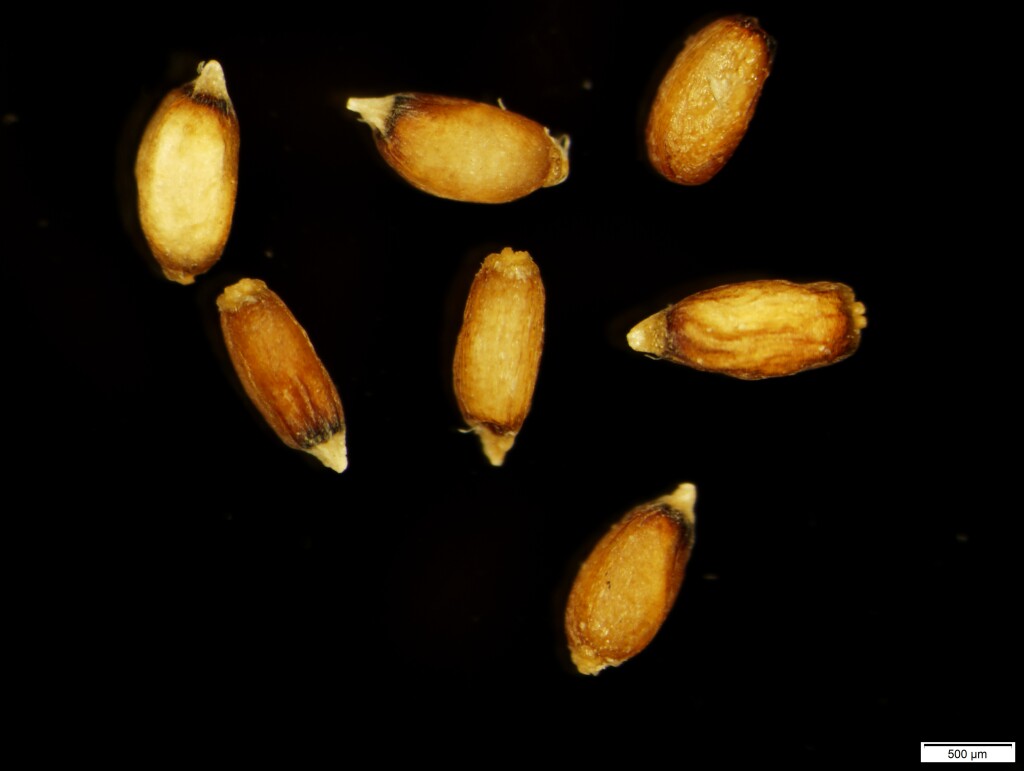Eragrostis australasica
(Steud.) C.E.Hubb. Cane-grassShortly rhizomatous perennial, culms rather stout, to 5 mm diam. or more, covered in greyish wax at least when young, freely branching at nodes, to 3 m high. Leaves smooth and glabrous, rather stiff, largely confined to culms; blade flat or inrolled, to 20 cm long and 6 mm wide, but often rudimentary at upper nodes; sheaths spreading, loosely clustered at branching nodes; ligule ciliate, 0.5–0.8 mm long. Inflorescence a panicle, to 20 cm long and 12 cm wide, initially contracted but branches finally spreading. Spikelets 4–10-flowered, 5–13 mm long and 1–1.8 mm wide, slaty green or grey, shining; glumes membranous, faintly nerved, acute or erose at apex, the lower 1.5–3.5 mm long, the upper usually longer by 0.5–1.5 mm; lemma 2.3–3.5 mm long, obtuse or erose at apex; palea equal to lemma, splitting along the midline as the grain matures. Anthers 1.2–2 mm long. Flowers Sep.–May.
LoM, MuM, Wim, VVP, VRiv, MSB, RobP, MuF, Gold, DunT, NIS. All mainland states. Largely confined to clay-pans and shallow lakes in the north-west, from near Kerang to the SA border. More southerly records are often associated with irrigation channels and it's likely that these plants have established through inadvertent transport of seed.
Previously including E. infecunda, the more common 'cane-grass' in Victoria..
Walsh, N.G. (1994). Poaceae. In: Walsh, N.G.; Entwisle, T.J., Flora of Victoria Vol. 2, Ferns and Allied Plants, Conifers and Monocotyledons, pp. 356–627. Inkata Press, Melbourne.
 Spinning
Spinning


